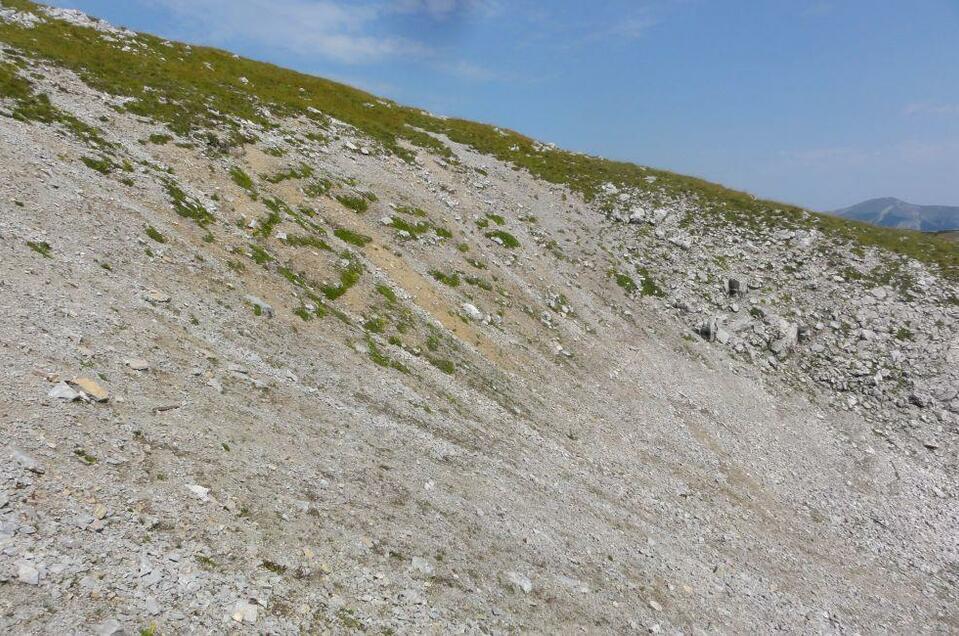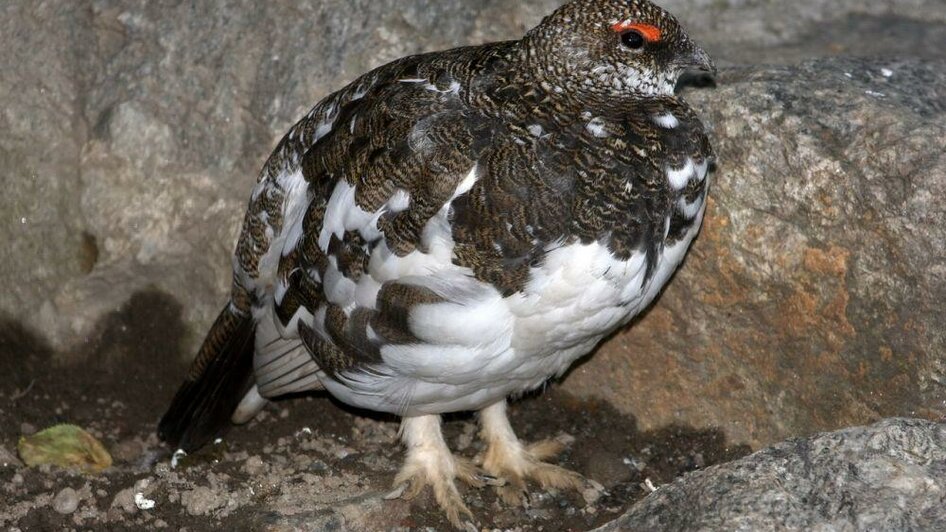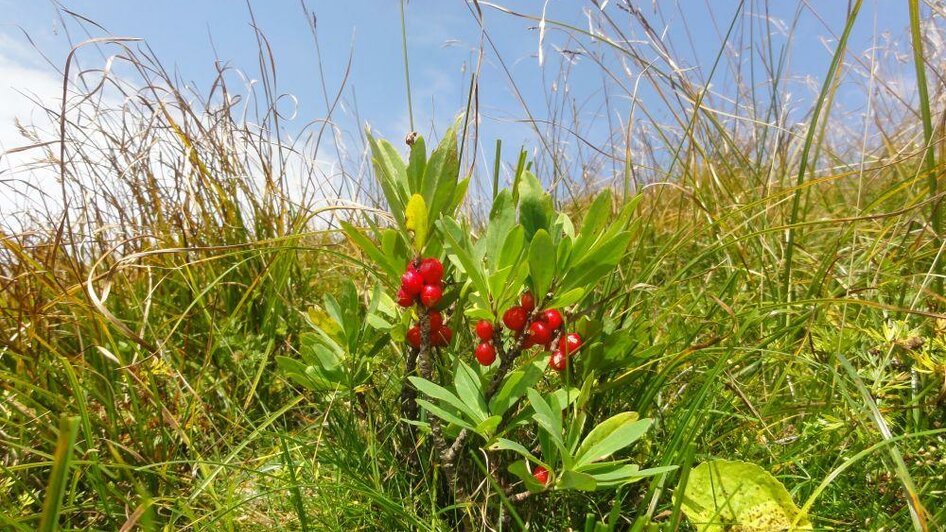Heukuppe und Predigtstuhl
Neuberg an der MürzNatural gems are special habitats in the cultural landscape, unique creations of nature, and cultural historical peculiarities.
In the 7 Styrian nature parks, there are a total of 27 natural gems. All of these natural beauties are located along hiking trails, making them accessible by foot and free to visit. Naturally, our nature and landscape guides are happy to accompany you and give you insights into the world of natural phenomena, the special flora and fauna that have found their habitats in these locations.
Landscape protection area 16 – Ennstal and Eisenerz Alps
- Heukuppe: 551742.9 E or 5281967.2 N
- Predigtstuhl: 553185.3 E or 5282775.8 N
- What3Words Heukuppe: ///halbes.betraute.engel
1800 m – 2007 m
Preiner Gscheid
There are numerous paths to Heukuppe, which belongs to the Rax mountain range. From Preiner Gscheid, Heukuppe and Predigtstuhl are easiest to reach via the Siebenbrunnen basin and the Karl-Ludwig-Haus.
Karl-Ludwig-Haus
Waxriegelhaus
June to October
Moderate, easy to the Siebenbrunnen basin
2.5 hours (6 km)
Heukuppe and Predigtstuhl are located in the border area of Styria and Lower Austria. The valley towns are Altenberg an der Rax in the southwest, Reichenau an der Rax in the southeast, and Hinternaßwald in the north.
The two peaks belong to the Rax mountain massif, which again is part of the northeastern Limestone Alps. They are formed from Wetterstein limestone and Wetterstein dolomite – thus, a basic parent rock is present.
The highest elevation is Heukuppe at 2007 m above sea level. Predigtstuhl is slightly lower at 1902 m above sea level. Along with Schneeberg and Schneealm, they are among the easternmost high alpine outposts of the limestone Alps before the transition to the Vienna Basin and the Pannonian Plain.
The habitats on Heukuppe and Predigtstuhl lie within the alpine zone with its typical climate: high solar radiation in summer, overall short growing season, which can be interrupted by stronger cooling and snowfall, strong winds and deep frosts in winter, with parts of the highest locations being snow-covered or snow-free depending on the terrain morphology. Snow-free vegetation presents a particular challenge for plants in the winter's deep frosts.
The vegetation can be subdivided into eight habitat types. Due to the close interlinking of habitats, delimitation is not always straightforward.
The following types occur in these high locations:
- Open high mountain carbonate grassland
- Closed high mountain carbonate grassland
- Herb-rich high mountain grassland
- Open wind edge grassland
- Carbonate snow hollows
- Dwarf shrub heaths of high locations on carbonate (consisting of hairy alpine rose and chamois heath above carbonate)
- Carbonate rock walls of high locations
- Carbonate rubble flats of high locations
In a vegetation cover with coverage of less than 70%, it is referred to as open grassland.
The grasslands on limestone are very species-rich and are often dominated by cushion sedge (Carex firma), rusty sedge (C. ferruginea), limestone bluegrass (Sesleria caerulea), whorled-leaved lousewort (Pedicularis verticillata), Austrian gentian (Gentianella austriaca) – an endemic of the northeastern Limestone Alps –, real wound clover (Anthyllis vulneraria), stemless catchfly (Silene acaulis) – a cushion plant –, Peter's stem (Primula auricula), alpine sea pink (Armeria alpina), star lover (Bellidiastrum michelii), edelweiss (Leontopodium alpinum), felt brandy (Homogyne discolor) and marsh fleawort (Parnassia palustris). The cushion-forming plants that partly occur here indicate exposure to cold and wind.
With a vegetation cover exceeding 70%, the grassland is referred to as "closed". Here, the same species occur as in the above habitat type, but also tussock sedge (evergreen sedge, Carex sempervirens), Clusius gentian (Gentiana clusii), limestone rock cinquefoil (Potentilla caulescens), low gentian (Gentiana pumila) – also an endemic of the northeastern Limestone Alps – and alpine clubmoss (Selaginella selaginoides).
In somewhat richer nutrient, deeper soil areas, alpine meadow grass (Poa alpina), alpine broom grass (Anthoxanthum alpinum), limestone bluegrass, tussock sedge, alpine meadow grass (Phleum rhaeticum), alpine pasqueflower (Pulsatilla alpina), real mezereum (Daphne mezereum), Parlatore's oat grass (Helictotrichon parlatorei) and alpine sunrose (Helianthemum alpestre) occur.
In particularly wind-exposed areas, such as edges and ridges, nearly without winter snow protection thrive Kobresia myosuroides, alpine fescue (Agrostis alpina), dwarf masterwort (Ligusticum mutellina), whorled-leaved lousewort (Pedicularis verticillata), Crantz's cinquefoil (Potentilla crantzii), the purple-flowered alpine sweet clover (Hedysarum hedysaroides), eyelash rock jasmine (Androsace chamaejasme), stemless catchfly and stone yarrow (white yarrow, Achillea clavennae).
In the area of depressions and hollows with long snow cover in shady locations and correspondingly short growing season (1–3 months), the following species occur: eastern alpine yarrow (Achillea clusiana), man's shield saxifrage (Saxifraga androsacea), Austria alpine snowdrop (Soldanella alpina), Noric woodruff (Galium noricum), alpine moss clover (Sagina saginoides) – a white-flowered carnation plant –, eastern glacier gentian (Doronicum galciale subsp. calcareum) and Austria bellflower (Campanula pulla) – again, two endemics of the northeastern Limestone Alps.
The extremely wind-exposed ridges are dominated by chamois heath (Loiseleuria procumbens), and in hardly wind-exposed spots, eyelash alpine rose (Rhododendron hirsutum), lingonberry (Vaccinium vitis-idaea), alpine bearberry (Arctostaphylos alpinus), black crowberry (Empetrum nigrum), dwarf alpine rose (Rhodothamnus chamaecistus), Waldstein willow (Salix waldsteiniana), eastern alpine willow (Salix alpina) and creeping thyme (Thymus praecox) occur.
The rock walls are often only inhabited by higher plants in the rock crevices; the bare rock is not completely bare, as here lichens represent the primary colonizers.
Among the vascular plants, Clusius's cinquefoil (Potentilla clusiana), star hair rock flower (Draba stellata), alpine bladder fern (Cystopteris alpina), dwarf bellflower (Campanula cochleariifolia), rock ball cinquefoil (Kernera saxatilis) – a white-flowered crucifer –, stone pearl (Petrocallis pyrenaica) – a pink-flowered crucifer –, rock valerian (Valeriana saxatilis), small ray seed (Heliospermum pusillum), the endemic Rax bellflower (Campanula praesignis) and wall fern (Asplenium ruta-muraria) inhabit the barren environment.
Lastly, the carbonate rubble flat is mentioned as a habitat type, as found on the southern slope of Heukuppe in a doline. Here, for instance, the net willow (Salix reticulata), knotted knotgrass (Persicaria vivipara), rock ball cinquefoil, single flower bulrush (Juncus monanthus), and dwarf bellflower reside.
The exposed summit area is characterized by short, shallow-rooted alpine grasslands that are continuously exposed to wind and are very rich in plant species. Here, zoologically significant populations of peripheral alpine, endemic species can be found, such as that of the cylinder rock snail (Cylindrus obtusus) from the family of periwinkles – it occurs worldwide only in Austria.
More commonly and widely distributed is the spotted periwinkle (Arianta arbustorum). Additionally, the alpine mountain grasshopper (Miramella alpina) and the colorful grasshopper (Omocestus viridulus) inhabit the meadows abundantly.
Significantly more prominent are large herds of chamois. Golden eagles (Aquila chrysaetos), alpine ptarmigan (Lagopus muta), and black grouse (Lyrurus tetrix) are prominent representatives of the avifauna.
Somewhat lower down on the south-facing slopes of Heukuppe, sunny, less wind-exposed, warmth-enabled areas can be found, where a multitude of invertebrate species find suitable habitats.
A characteristic species is the alpine Apollo butterfly (Parnassius phoebus). Examples of grasshopper species include the red club grasshopper (Gomphocerippus rufus), the nightingale grasshopper (Chorthippus biguttulus), and the alpine bush grasshopper (Pholidoptera aptera).
Here, one can also find the preferred hunting areas of the viviparous lizard (Zootoca vivipara) and the common European adder (Vipera berus). The black color variant of the adder is referred to as "hell adder".







